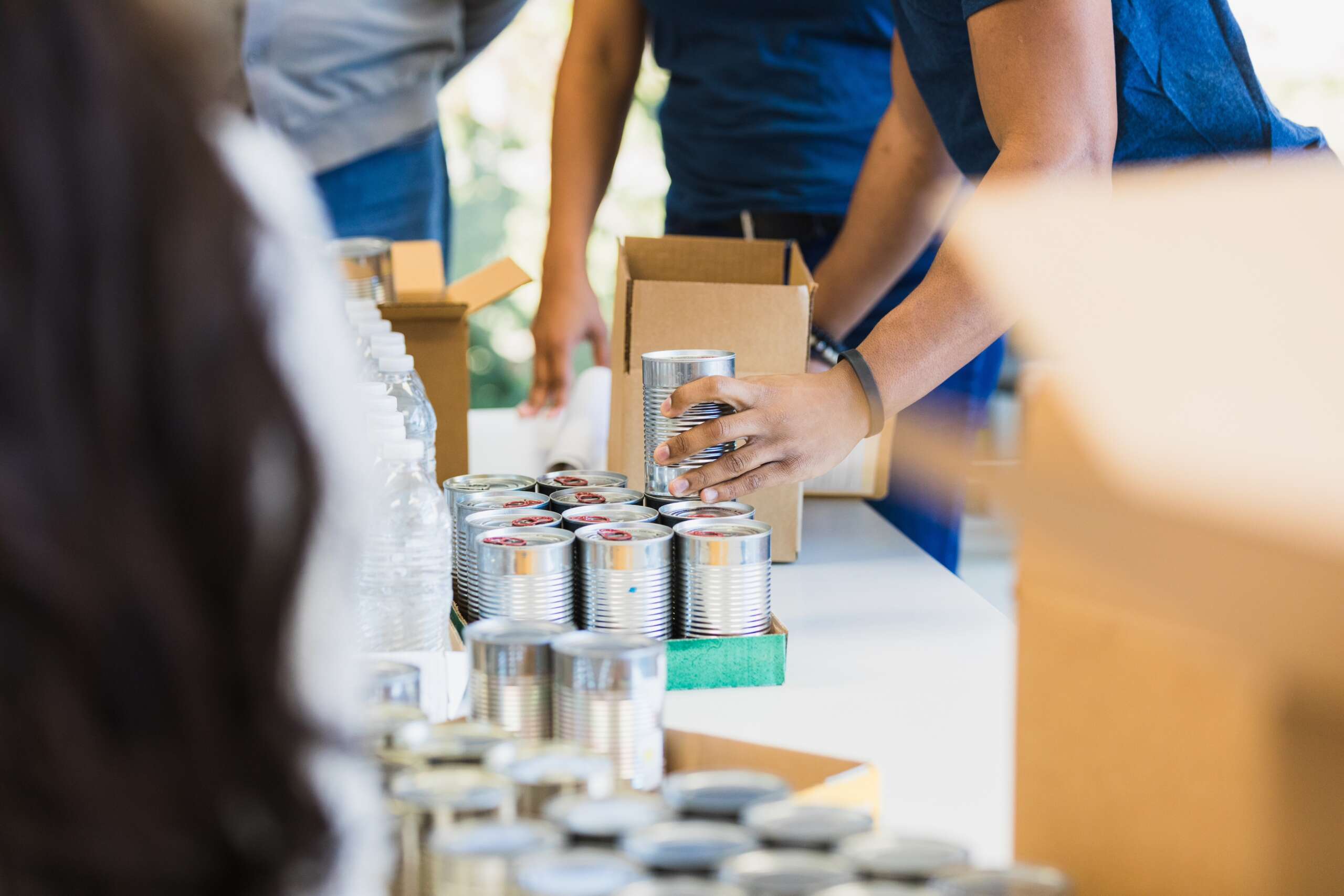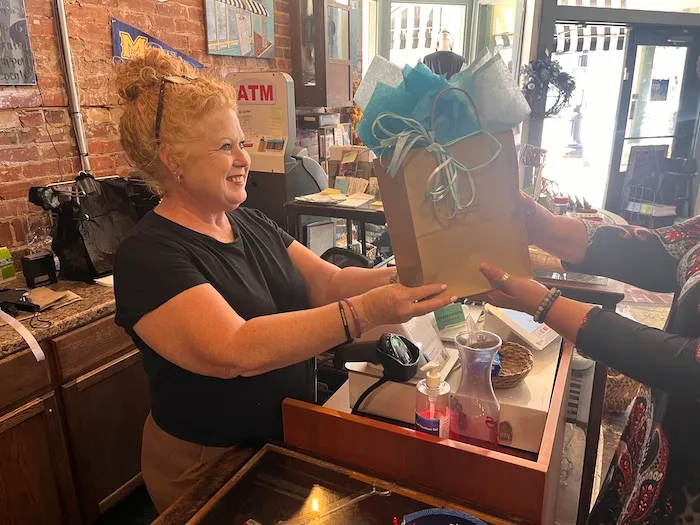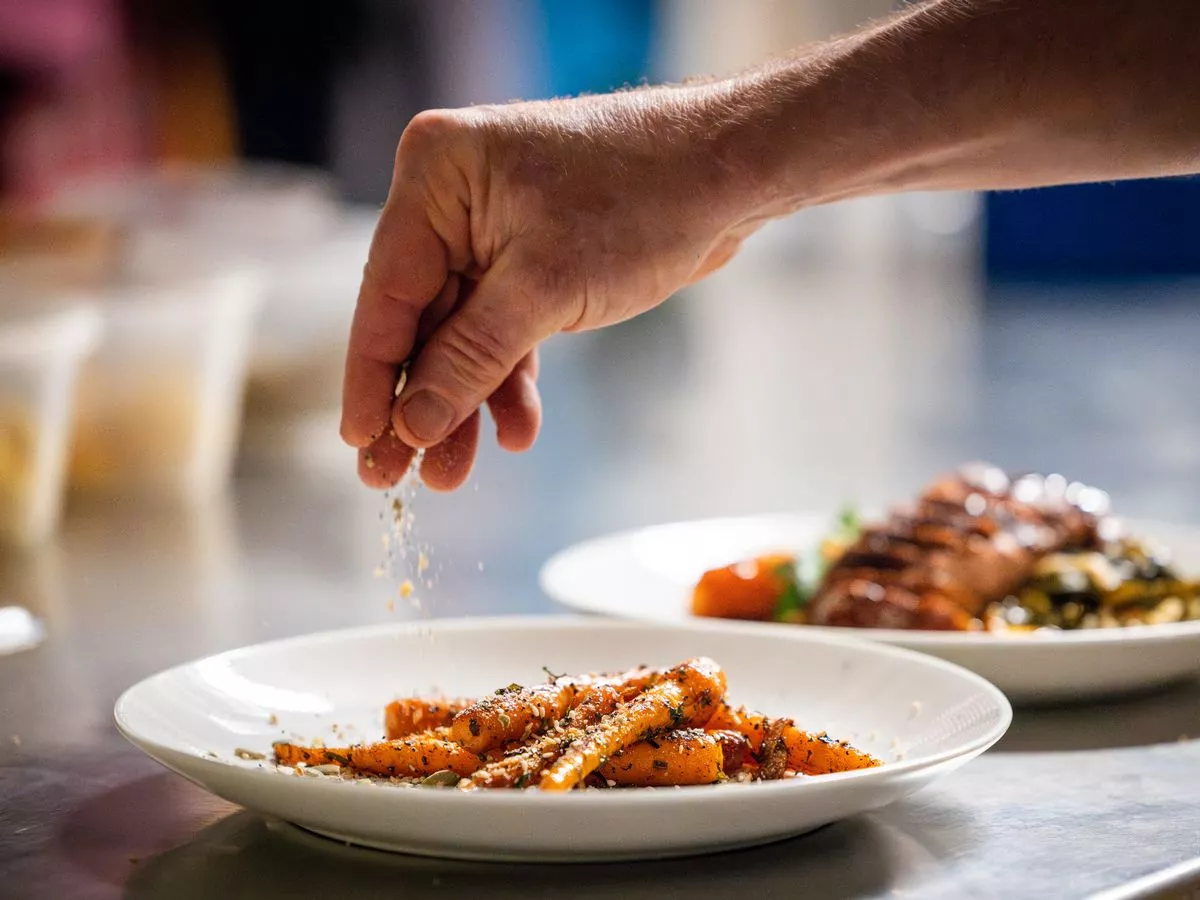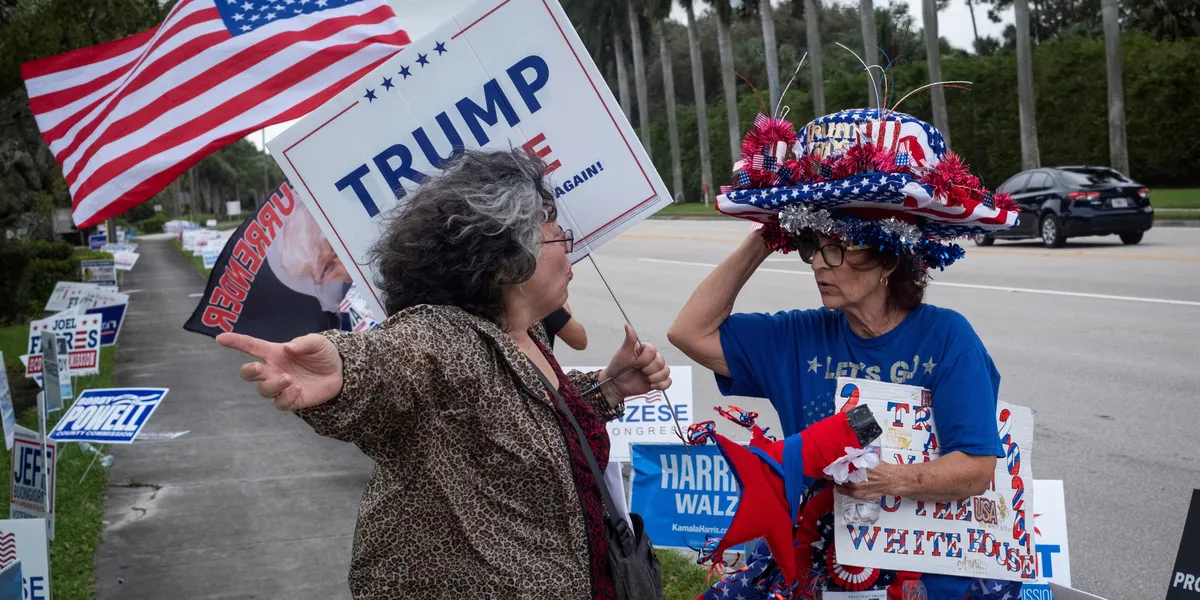Copyright truthout

The 2025 government shutdown has reached a new record, and tribal leaders are beginning to run out of patience and funds, with many dipping into their own already strained reserve funding with no promise it’ll be reimbursed. The 35-day shutdown has violated countless trust and treaty agreements between the United States and tribal nations. With a reduction of monthly Supplemental Nutrition Assistance Program funds violating several tribes’ guarantee of food in exchange for land usage, tribes like the Cherokee Nation are spending millions to protect their people. The Cherokee Nation allocated more than $11 million of its own resources towards food security measures including $10.5 million in SNAP-like meal vouchers for 60,000 affected citizens and $1.25 million in food bank assistance to northeastern Oklahoma on Oct. 30. “We went into this without any assurance that (reimbursement) would happen, without being able to identify a particular law regulation that we could rely on for the repayment,” said Cherokee Nation Principal Chief Chuck Hoskin. “But the choice between helping, mindful that we may never remove these dollars, and standing back until we got some federal guarantee was really a nonchoice.” On Nov. 4, the U.S. Senate failed for a 14th time to pass a continuing resolution and end what is now the longest government shutdown in United States history. Americans are tired, said Michael Stopp, Cherokee and Muscogee and the president and chief executive officer of Seven Star Holdings. “I think they’re tired of Washington nonsense,” Stopp said. “Members of Congress are still getting paid while programs that they depend on are not.” Despite a 14th failed vote, there could finally be some movement this week to end the shutdown, Stopp said. Senators are starting to feel pressure to compromise and Democrats could be willing to vote on a Continuing Resolution, said Holly Cook Macarro, Red Lake Ojibwe and a tribal advocate and political strategist. “Those higher premium costs are devastating to so many families and individuals, and that, in combination with the lapse in SNAP funding, it’s too much,” Cook Macarro said. “The reality of what has been threatened for the last, you know, the last few weeks is, this is where the rubber hits the road and the impacts are really being felt.” With the recent loss of full SNAP benefits and Low Income Heating Assistance Program funding and expiring Affordable Care Act subsidies, the U.S. Senate may begin feeling some pressure to pass a continuing resolution to fund the government. The deadline for next year’s spending bill is slated for Nov. 21 and Senate Majority Leader John Thune has indicated the need for a new deadline to allow for more time to draft and pass the 2026 budget. The result of the Nov. 4 midterm elections may also have an impact on the length of the shutdown going forward. A blue sweep could lead to an increased desire for compromise among republicans, Cook Macarro said. But it could also mean Democrats double down on their decision to hold out for Affordable Care Act subsidies, Stopp said. Meanwhile, Americans are feeling the effects of a long-term shutdown, especially tribes who’ve spent the past 35 days operating off of reserve funding. A federal court mandated that the U.S. Department of Agriculture tapped into its emergency funding to keep SNAP funding flowing to low-income Americans. However, in a social media post Tuesday morning, Trump said SNAP benefits “‘will be given only when the Radical Left Democrats open up government, which they can easily do, and not before!’” The White House later clarified Trump’s post, with White House Press Secretary Karoline Leavitt saying Trump meant he “‘does not want to have to tap into this fund in the future.’” The USDA has stated it only has enough money to cover half of the usual SNAP benefits and funding may be delayed as it prepares to deploy emergency funds. With uncertainty and an unclear SNAP distribution timeline, tribes are mobilizing to feed their citizens. More than a million American Indian, Alaska Native people depend on the program, though that number may be much higher as it’s unclear if the USDA used American Indians and Alaska Natives alone or in combination Census population numbers. The USDA did not respond by publication to clarify. “We are prepared,” Lower Brule Sioux Tribe Chairman Boyd Gourneau said. “We know it’s (SNAP) gonna be late.” “A Remarkable Mobilization” Tribes across the country have mobilized to ensure their people are fed as SNAP funding remains uncertain. Whether it’s through food vouchers or bison meat food drives, Indian Country has taken an immense step to prepare for whatever is coming even without the guarantee that they’ll get their funds spent fulfilling violated trust and treaty obligations back. “It’s been a remarkable mobilization across the country,” Cook Macarro said. “I’ve seen tribes, tribal governments and allies working to ensure that meals aren’t missed and our children are fed. But at the same time these resources are not unending and I think everybody is concerned about how long this shutdown lasts and those funds are not there.” In central North Dakota, Food Distribution Program usage has grown by more than 60 percent across Spirit Lake Oyate members. The increase in usage isn’t just from the shutdown, said Mary Greene Trottier, Spirit Lake’s Food Distribution Program director, it stems from federal layoffs this spring compounded by federal furloughs in October and now SNAP reductions. The Food Distribution Program on Indian Reservations, also known as commodities, provides boxes of food to income-eligible households on tribal lands or in designated areas immediately outside of tribal lands in the country. While some tribes, especially those in the Great Plains, urged tribal members to consider switching to the Food Distribution Program prior to the start of November, many Native people don’t have that option as programming is unavailable in 23 states and is not available in any U.S. territories or Washington, D.C. “The folks that are receiving a partial benefit this month for SNAP, if this continues, they’re going to slowly move over to our program,” Greene Trottier said. “And the food warehouses, I hope they’re equipped to handle that influx of participants.” Approximately 28 percent of American Indian and Alaska Native households are food insecure, meaning they didn’t have enough food to live a successful life, according to a 2024 report from the United States Office of Government Accountability. The report aimed to address what barriers caused such a high rate of food insecurity in Native communities and if the Food Distribution Program was working. With the loss of full SNAP benefits, that percentage will likely grow. “No matter what people need to eat, it’s just absolutely frightening,” Greene Trottier said. “Those numbers (of food insecurity) are going to continue to rise with this crisis that’s going on across the United States.” Greene Trottier said she hasn’t been given an answer as to if the USDA’s emergency SNAP funding will be dispersed. “We’re working on a plan to help SNAP families out, but that’s taking away resources from the tribe,” Greene Trottier said. “We’re still trying to play catch up after 150 years, and people are under the assumption that we have all this casino money, but you know, we’re still way behind the times and are trying to catch up with no tax base.” As part of its state of emergency declaration, Greene Trottier said Spirit Lake will be creating a voucher system for tribal members on and off the reservation to use in place of SNAP. And more than 1,000 miles away in eastern Oklahoma, the Cherokee Nation is in a similar situation, said Principal Chief Hoskin. The loss of full or even partial SNAP funding creates an emergency situation across the entire country, Hoskin said. “We felt that there wasn’t anything to do but respond with some direct assistance to fill the gap, and that’s primarily what the package of emergency assistance we put together will address,” Hoskin said. On Oct. 30, the Cherokee Nation announced it would be allocating $10.5 million from its general funding to help feed the 60,000 affected Cherokee families losing their SNAP benefits this month. So far over 12,000 tribal members have sought assistance following the announcement, the Cherokee Nation said. “We just want to make sure that people are made whole for what is the average SNAP benefit,” Hoskin said. The Cherokee Nation is also allocating an additional $1.25 million of its own money towards local and regional food banks in northeastern Oklahoma for families in need. “So it’s really a multifaceted approach, direct cash assistance to those that we know are demonstrably hurting, and then a broader investment in food security nonprofits so that we can help as many as possible,” Hoskin said. While the state of North Dakota where Spirit Lake is located has vowed $1.5 million towards food programs in the state, Oklahoma hasn’t stepped up for its roughly 700,000 SNAP users, Hoskin said. “We’re in a state that is sitting on a $3.6 billion surplus,” Hoskin said. “We know in the state of Oklahoma that they could solve the snap problem for everyone in the month of November for about $140 million but the state is choosing not to do that.” Oklahoma’s inaction has forced tribes to pick up the slack and make sure their people are fed, Hoskin said. “Of course, that’s their right as a state, but I think it’s the wrong decision, because they could end misery and anxiety and uncertainty and the economic consequences of really millions of dollars being removed from the state’s economy, if the state would take a small percentage of its massive reserves and save SNAP,” Hoskin said. “But in the absence of state leadership saving SNAP, we are saving SNAP for people across the country.” Hoskins said more than 60,000 Cherokee Nation citizens across the entire United States use SNAP. Ideally, once the shutdown ends the United States would pay back the $11.75 million that the Cherokee Nation is having to take from its own reserves to fulfill mandated trust and treaty obligations, but Hoskins said he’s not going to count on that happening. “We certainly would appreciate that, and that would certainly be the right and just thing to do,” Hoskin said. Cook Macarro agreed with Hoskins, as the Trump administration has proven it has different priorities for federal spending over the past year and the president isn’t afraid to use the courts to validate his spending. “I would not rely on the government’s reimbursement for funds that tribes chose to spend on their own in the absence of the federal spending,” she said. Heating Assistance Program Aside from SNAP, Low Income Heating Assistance Program funding has taken a hit, said Ben Mallott, president of the Alaska Federation of Natives. It’s expensive to heat a home in Alaska, said Mallott, who is Tlingit and Athabaskan. Fuel, gas and other elements are costly for families, especially those who are losing their full SNAP benefits this month. “A lot of the people who use (the Low Income Heating Assistance Program) are usually also those who depend on SNAP,” Mallott said. “So without both programs, you don’t have SNAP and you don’t have LIHEAP to pay for your fuel, what are you going to do?” Firewood for heating homes isn’t necessarily always accessible. Some regions of Alaska including the North Slope, Aleutian Islands, and higher elevations above the timberline in mountain ranges lack trees. “For a lot of regions that might not have that (lumber) LIHEAP and fuel are a pretty big deal,” Mallott said. Spirit Lake is in a similar position, Greene Trottier said. A majority of trees on the Spirit Lake Reservation were planted as a Windbreak Planting Area back in the 1930s and 1940s as part of the Great Plains Shelterbelt project aimed at preventing another dust bowl. Greene Trottier said her grandfather actually worked on the project. There are regulations around cutting down windbreak trees. “It’s gotten chilly up here so those resources are pretty valuable,” she said. “I don’t know how our tribe can sustain this without being solely dependent on resources.” Indigenous Congressional Members And federal employees are beginning to feel the full weight of 30 days without a full paycheck, something Kansas Rep. Sharice Davids, Democrat, weighed in on. “Government shutdowns have real consequences for the real people who keep our skies safe and our travel systems running,” said Davids, who is Ho-Chunk, in an Oct. 30 press release. “Aviation workers are dedicated public servants, and no one should have to go weeks without a paycheck due to partisan political gridlock in Washington. Congress must come together to reopen the government – it’s been too long, and Kansans are hurting.” Passengers at the Bush International Airport in Houston reported security checkpoint queues with an estimated wait time of more than three hours on Nov. 3, the 34th day of the shutdown as federal aviation workers and Transportation Security Officers have begun to not show up to work without pay. Government workers have gone over 30 days without a full paycheck, and it’s starting to hurt, said Boyd Gourneau, chairman of the Lower Brule Sioux Tribe in central South Dakota. “We’ve got tribal members that are working in the (Bureau of Indian Affairs), they need their paycheck, their insurance, their living expenses,” Gourneau said. “I don’t know how the government can discard them folks so easy. I’ve tried to give them some buffalo meat and they said they can’t accept gifts. I just don’t understand and really wish some humanity would come into play here.” In the mid ’90s, Stopp said his own family experienced what it’s like to go weeks without a paycheck during a government shutdown. Stopp’s mother was working for Indian Health Service in 1996 and worked without a paycheck during what is now the third longest shutdown in U.S. history. “You’re going to have people who are facing different circumstances,” he said. “Those who are deemed essential and still have to go to work, they can’t make money on the side, and they’re still having to go to work and still pay their bills and still find a way to put groceries on the table. And then you’ve got those that are furloughed who can go out and try to make some extra money to help with that.” Many congressional members from both sides of the aisle are calling for an end to the shutdown with each side blaming each other. “The Democrats are okay with using the American people as collateral damage,” said Republican Oklahoma Rep. Tom Cole and a member of the Chickasaw Nation. “It is the disclosure of their clear lack of concern for everyday hardworking American families whom they were elected to serve.” In a Facebook post on Nov. 4, Oklahoma Sen. Markwayne Mullin, Republican and Cherokee, urged Democrats to vote yes on the continuing resolution to reopen the government. “Not expecting a big change today, but we’ll likely see movement after these Tuesday elections,” Mullin said. ICT is an independent, nonprofit multimedia news organization covering Indigenous issues and communities. We are supported by foundations, donor contributions, and corporate sponsorships. Follow us on Facebook, Instagram, YouTube, TikTok, and Bluesky.



